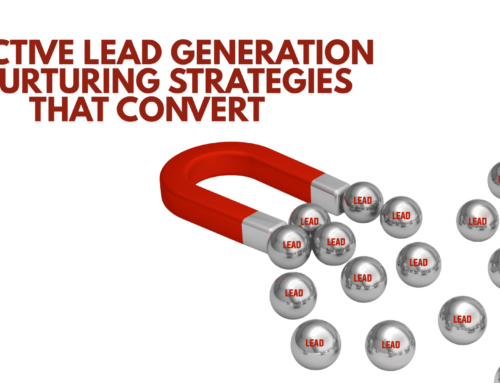In the world of marketing “community and social engagement” have come to mean a wide variety of things. For some marketers, community engagement refers to the activity among a base of users and customers that regularly use a brand’s products or services. For others, community engagement can be synonymous with social responsibility, which sometimes has political connotations.
But we like to take a different approach.
What does it really mean to engage with the community?
Here at BRAINBOX, we believe being community-minded goes far beyond aligning with a certain social cause. Community engagement is about being on the ground with your audience at events that matter to them, providing experiences that will stay with them for years to come.
Because the BRAINBOX team has activated brands at events all across the country, we wrote this article to help marketing managers and business owners see how they can engage with the community in an authentic way that drives profits and maximizes ROI. Here are our top three key steps to running a successful community engagement campaign.
Do Your Research. Know As Much As Possible About Your Target Audience
If you want your community engagement efforts to drive profits, it’s important you pick the right community. As with other types of marketing, when it comes to experiential marketing, knowing your audience is your biggest and most valuable asset. With that in mind, it’s important to do research to determine what groups and causes matter most to the people your brand is trying to reach.
How much information is enough?
One of the biggest challenges in market research is knowing when you’ve collected enough data about your target audience. You could send out surveys for years and still continue to discover new insights.
 Marketers have a (sometimes unhealthy) love affair with data and numbers, but we’re not always the best at strategically applying what’s relevant and not wasting time on what’s not.
Marketers have a (sometimes unhealthy) love affair with data and numbers, but we’re not always the best at strategically applying what’s relevant and not wasting time on what’s not.
Part of this is because marketing departments are often tasked with accomplishing the goals of others: HR wants help recruiting, Sales wants help driving new business, the Operations Manager wants clearer internal communications. With each of these segments of the company competing for the marketing department’s limited time, you never know what information will suddenly become useful.
But unless you’ve got a full time data analyst at your disposal, sometimes you have to develop a bit of tunnel vision to avoid a classic case of analysis paralysis.
In the end, the key to segmenting relevant information is always going to come down to your target audience. Once you know these five things, you have enough information to begin crafting a community-oriented event.
- Where does your audience get their information?
- What are they reading and watching, online and offline?
- Where does your audience fall on the political spectrum?
- Which causes or organizations does your audience donate money to?
- What is the end state they are attempting to achieve? What are their goals for success?
What do you do with the information once you find it?
Knowing the answers to the questions above should help you establish some clear boundaries for creating an event. From this data, you should be able to discern what your audience cares about and how to promote your event once you create it.
Actually Be A Community-Minded Company
If being socially-minded is important in today’s climate, being authentic is even more vital. So as your company is choosing community initiatives that align with its social stance, make sure you’re picking things that truly matter to you and your audience.
The best philanthropic and community campaigns have posterity that extends beyond this quarter, especially in the age of the internet. People are going to be coming across press releases and social posts of your community efforts for years to come, so make sure that your message and actions are consistent.
An example: Patagonia
 No company is better at this than Patagonia.
No company is better at this than Patagonia.
Their business model is a simple one: they sell apparel and accessories to people who participate in outdoor activities for recreation and work.
It stands to reason that their target audience would be interested in protecting the environment, but Patagonia goes much further than a standard fundraiser or donation to an environmental charity.
Instead, the company organizes protests and community activism centered around conservation and is transparent about making its supply chain increasingly eco-friendly.
Will everyone agree with the company’s stance on things like climate change, the loss of biodiversity, and their approach to helping solve those problems? No, but no one doubts the company’s sincerity because over the past four decades they’ve been incredibly consistent in their beliefs, which have shaped every aspect of their business.
Be Clear About Your Goals. Plan For Tracking ROI Before You Start.
If you’re a Marketing Manager, you’re evaluated by the ROI of your marketing efforts. So while there’s nothing wrong with creating a community engagement campaign for purely philanthropic reasons (i.e. without expecting your company to tangibly benefit), at the end of the day (or quarter, or year) your business needs to make money. Even nonprofits have to track how the amount of donations come through fundraising events.
Track everything.
 So you know who your target audience is and you’ve chosen a cause or event that aligns with what matters to both that audience and your company. The next step is determining your KPI’s for your campaign and crafting a clear method to track them.
So you know who your target audience is and you’ve chosen a cause or event that aligns with what matters to both that audience and your company. The next step is determining your KPI’s for your campaign and crafting a clear method to track them.
Do you want to create awareness by activating your brand at a community event?
Start by recording attendees to reach out to them in another campaign.
Considering offering a discount for one of your products?
Coupons, when used correctly, are really the gift that keeps on giving. Even if you’re giving away products to a community partner or group for free, you can track online and in-store purchases from that community if you issue a coupon that’s specific to that campaign with your donation.
Don’t get overwhelmed. Call the Experts.
Are you looking to engage with your customers at events they find significant? Not sure where to start concerning research or tracking KPI’s that will make you look like a marketing rockstar? Don’t stress. Contact the BRAINBOX team for help to get your national, regional, or local event up and running.
We’ve even got no stress, turn-key experiential marketing solutions to get your brand in front of thousands of people on the ground and online. So whether you need help crafting a custom experiential marketing solution, identifying and targeting your audience, or promoting your event to the press, our team of experts can help make your event a success.
Think outside the box with BRAINBOX.
Photo Credit: Patagonia






